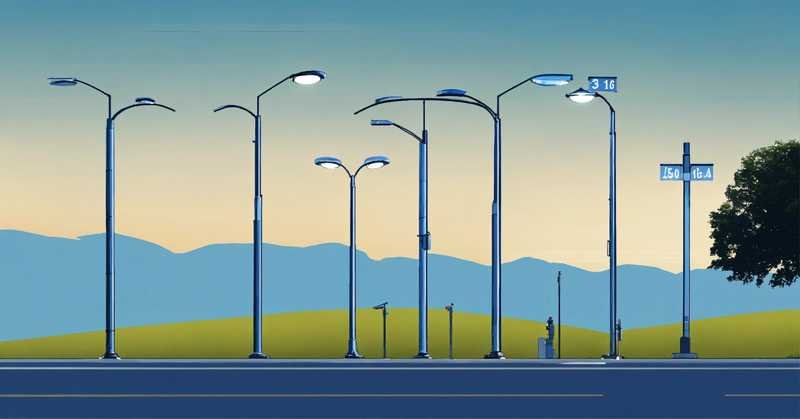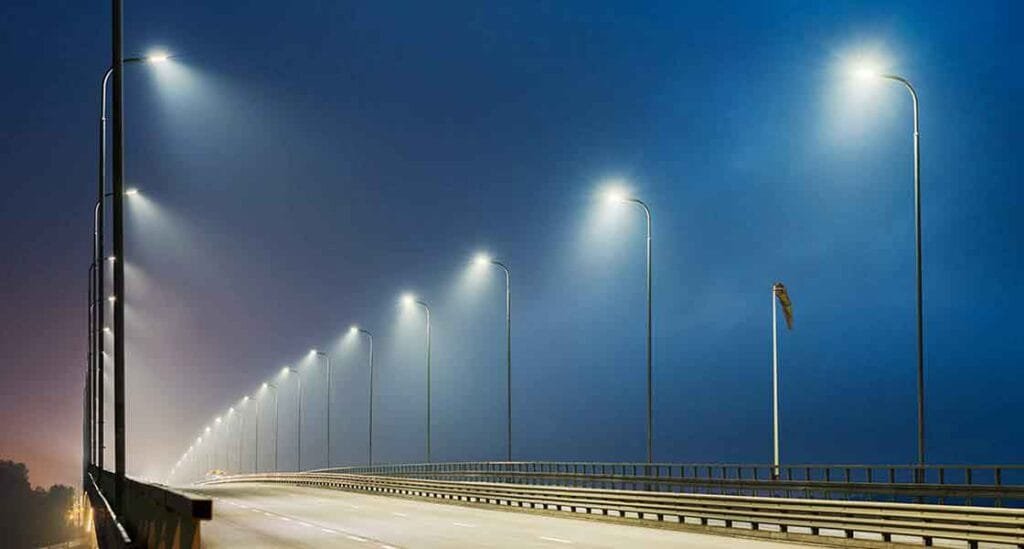In 2013, I was tasked with reviewing a lighting layout for a new highway extension project. We dismissed solar lighting in the first meeting—it was too expensive, too bulky, and too unreliable for anything beyond parking lots or rural paths.
Today, I specify solar street lights for entire districts, and they outperform grid-tied systems in both cost and longevity in the right settings.
This shift didn’t happen overnight. Over the last decade, solar street lighting has quietly evolved from a fringe option to a reliable part of public lighting infrastructure. In this article, I’ll walk through how that transformation happened—from the viewpoint of an engineer who has worked on both traditional and solar projects across Asia and Africa.
What Defines a Solar Street Light System?
From an engineering design standpoint, a solar street light isn’t just “a panel and a bulb.” It’s a standalone power and lighting system, and each of its components must meet very specific performance criteria to be viable.
A complete unit includes:
- A monocrystalline solar panel, usually 50–150W depending on pole height and wattage
- A battery unit, now typically lithium or LiFePO₄, stored within the housing or pole
- A high-efficiency LED fixture, optimized for Type II or III street optics
- A controller, increasingly with MPPT and smart dimming logic
- A pole and bracket system, customized for wind zones and exposure
What sets it apart from grid-tied lights? No underground cabling, no electricity bills, and no dependency on external infrastructure. This makes them especially useful for rural deployments, new townships, or areas with unstable power.
What Solar Street Lights Looked Like in 2014
Back in 2014, I reviewed several solar lighting proposals that had glaring limitations:
- Lead-acid batteries that degraded within two years and weighed 30–40 kg
- Low-lumen LED chips (often <60 lm/W)
- Steel poles that couldn’t integrate the bulky battery boxes
- No real automation—just basic on/off light sensing
They were marketed as sustainable, but in practice, most required frequent battery swaps, high maintenance, and suffered poor user feedback.
Projects in Uganda and Pakistan I advised at the time saw battery theft and panel soiling as frequent issues, which the systems were ill-equipped to deal with.
Major Technological Breakthroughs (2015–2024)
The tipping point began around 2016–2018. By then, several innovations began converging:
-
Lithium Battery Adoption
- LiFePO₄ batteries with BMS (battery management systems) extended lifespan to 8–10 years
- Weight dropped by 50%, allowing pole or luminaire-integrated designs
- Deep discharge capacity made them viable for 3–5 cloudy days
-
LED Optical Design
- Street-rated optics became standard
- Output rose to 160+ lm/W, comparable to traditional HPS or MH fixtures
- Integrated glare control and uniformity improvements
-
All-in-One Systems
- From my standpoint, the all-in-one form factor was a game changer
- It simplified design drawings, reduced installation time, and minimized theft/vandalism points
- We deployed 200+ units in Ghana in 2020 using this format
-
Smart Controllers and Motion Dimming
- PIR/microwave sensors reduced power consumption by 30–50%
- MPPT controllers allowed better charging efficiency in partial sun
- Some systems integrated GSM or LoRaWAN modules for remote monitoring
Installation and Cost Evolution
One of the biggest engineering arguments against solar lighting used to be cost. But by 2022, that had flipped.
| Year | Battery Type | Panel Cost (USD/W) | Typical Install Cost | Payback Period |
|---|---|---|---|---|
| 2014 | Lead-acid | $1.50 | $1,500+ | >10 years |
| 2020 | Lithium | $0.30–$0.40 | $800–$1,000 | 5–7 years |
| 2024 | LiFePO₄ | <$0.25 | $700–$900 | 4–6 years |
From a BOQ (bill of quantities) standpoint, the removal of trenching, cabling, and power permits offsets the higher unit cost.
We recently redesigned a village road upgrade in Kenya: swapping 8-meter grid poles for 6-meter solar poles reduced the total project budget by 22%, even after adding anti-theft base covers and remote monitoring modules.
Global Adoption and Use Cases
I’ve seen three types of clients driving adoption over the last five years:
-
Municipal governments in developing countries
- Prioritize fast deployment, off-grid capability, and lower maintenance
- Projects funded by World Bank, AfDB, etc. often mandate solar-first solutions
-
Urban planners in smart cities
- Use solar poles for perimeter areas, parking lots, or pedestrian zones
- Combine lighting with EV charging, surveillance, and Wi-Fi
-
Private developers
- Reduce electrical infrastructure in large compounds
- Use solar lights to meet green certification credits (LEED, EDGE)
Engineering Comparison: Then vs Now
| Feature | 2014 Solar Light | 2024 Solar Light | Traditional Grid Light |
|---|---|---|---|
| Light Output | Inconsistent | High (LED 160 lm/W) | Stable (but less efficient) |
| Battery | Lead-acid (1–2 yrs) | LiFePO₄ (8–10 yrs) | None |
| Maintenance | High | Low | Moderate |
| Cabling | None | None | Required |
| Control Logic | Basic ON/OFF | Smart dimming, IoT | Timer-based |
| Ideal Use | Rural only | Urban & rural | Urban |
Remaining Technical Challenges
Despite the progress, no system is perfect.
-
Battery Disposal and Lifecycle
- Even LiFePO₄ needs recycling infrastructure
- Many regions still lack collection or reuse programs
-
Performance in Overcast Regions
- In Central Europe or monsoon-prone areas, oversizing panels/batteries becomes essential
- Hybrid solar + grid systems are gaining interest
-
Security
- In low-income zones, panel and battery theft remains a threat
- My recommendation: internal mounting + tamper-proof enclosures
The Road Ahead
The next five years will likely bring:
-
AI-Based Load Management
- Predictive dimming based on traffic patterns, weather, and usage history
-
Multifunction Poles
- Lighting + EV charging + surveillance + communications from a single unit
-
Design Integration
- Poles that double as urban furniture—sleek, modular, and low-profile
As a design engineer, what excites me is not just the tech, but how it gives us better tools to light public spaces sustainably, affordably, and with fewer compromises.
Conclusion
In 2014, solar lighting was a trade-off. In 2024, it’s a smart choice—with the right design.
For planners, municipalities, and engineers: if you haven’t reevaluated solar in the last 3–5 years, you’re likely working with outdated assumptions.
We’re not just saving electricity—we’re designing systems that are autonomous, resilient, and ready for the next generation of infrastructure.
Consider solar street lighting not as an upgrade, but as a new design paradigm.





